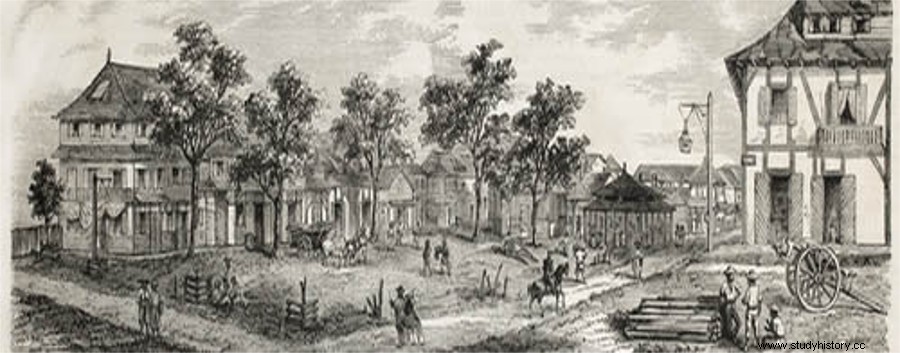
By Fabrício Santos
The maritime expansion started in the 15th century encouraged the rich countries of Europe to look for territories with the objective of conquering them. This was part of the mercantilist policy that prioritized the accumulation of wealth for states controlled by monarchs. At that time, the Portuguese and Spaniards took the lead in this colonial race, dominating regions located in South and Central America. France, on the other hand, found more difficulties in this conquest of new lands. The colonization process carried out by the French only began in the mid-16th century.
The first attempt at colonization by the French took place in 1555, in Brazil, when they occupied a small coastal region of Rio de Janeiro, which became known by the name of Antarctic France
strong> . Meanwhile, the Portuguese colonial force led by Governor-General Mem de Sá, in 1567, he defeated the French colonists. France also tried to control the Maranhão region, but the Portuguese again prevented the conquest.The success of French colonization in America did not occur until the 17th century. In Latin America, for example, Haiti remained a French colony until its independence in 1791. In this region, the French explored agricultural products, mainly sugar cane, and established colonization based on the development of an economy of plantation through the use of large estates and slave labor . North America was also a territory in which France exercised dominion over some regions. Quebec, current province of Canada; Louisiana, the Gulf of Mexico and Mississippi were areas controlled by French settlers.
The absence of sponsorship by the French State in the project of territorial conquest and the defeat suffered in the Seven Years' War (1756-1763) against the English contributed to the decline of France's colonial ambitions in America. The Treaty of Paris, drawn up shortly after the conflict with England, it decreed the surrender to the English crown of Canada, part of the French Antilles and the region east of the Mississippi River. Furthermore, the Louisiana region was still given to the Spaniards as a reward for the loss of Florida to the British.
